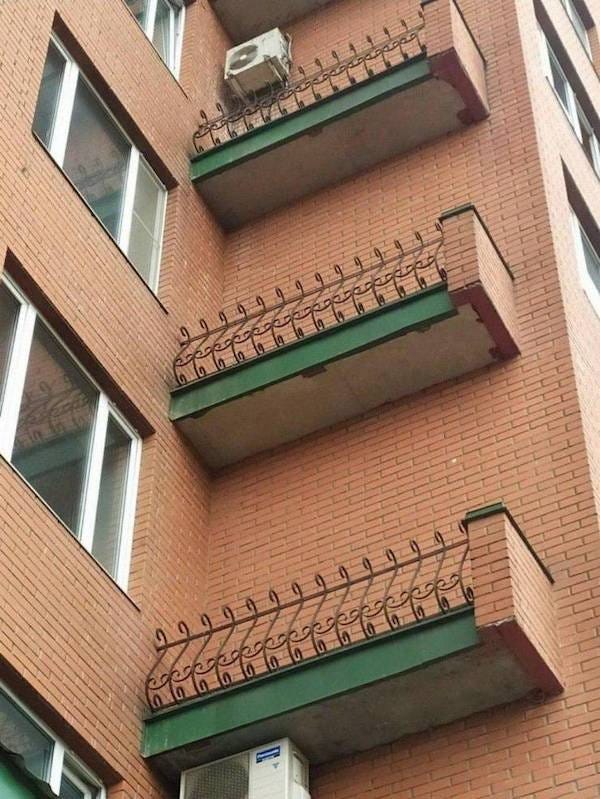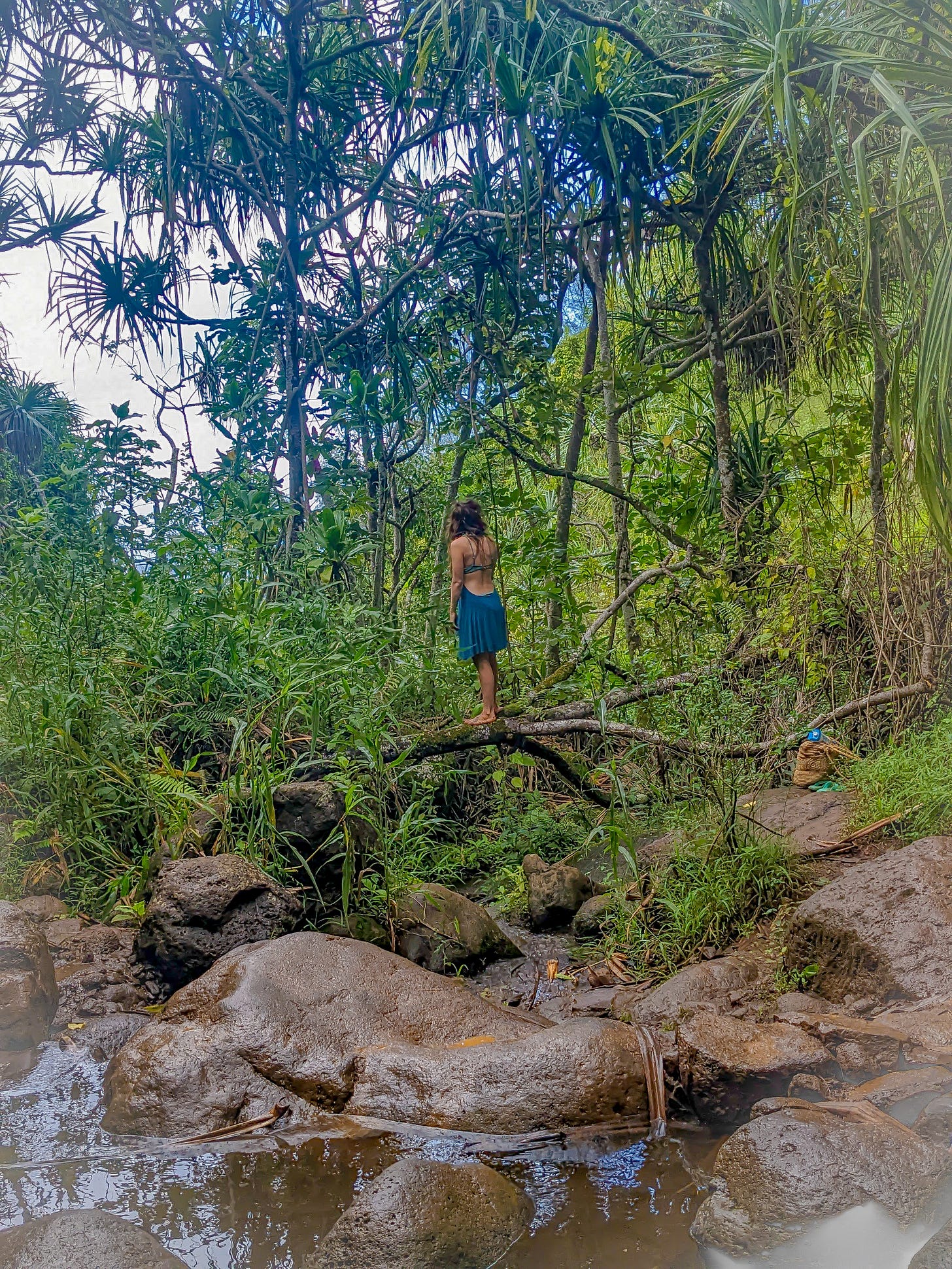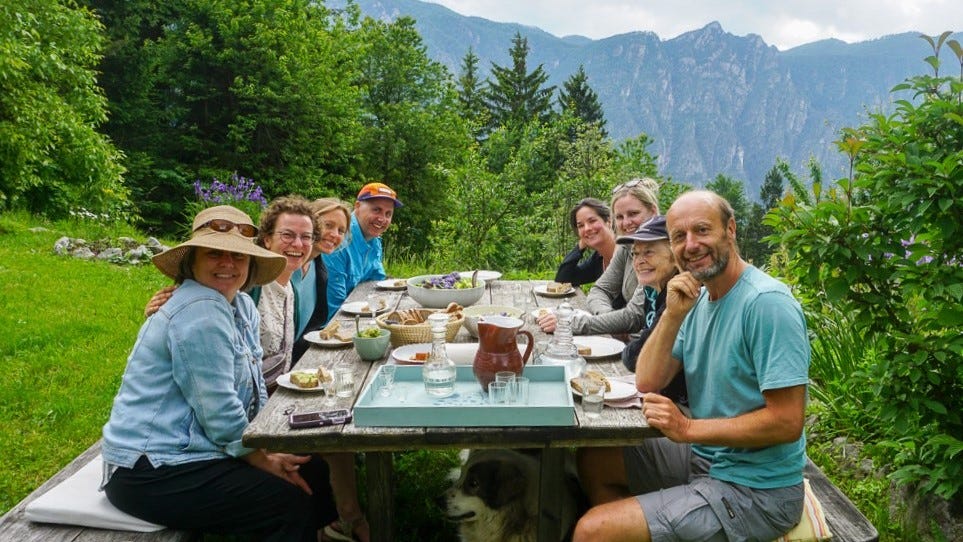Our 4 hottest record breaking days recently fell all in the same week.
I cringe to write an opening like that, because we can hardly pretend this is groundbreaking anymore.
If you’re like me, you drown in the feeling of futility. Basic existence is a battle when there seems to be no option, no solution, no hope. With the octopus-grip of the polycrisis tightening around us, we need ways to take action.
6 years ago, I found my hope and dedicated my life to working on it.
What’s a “Modern Village”?
Village
When people think of a village, they often think of a cluster of huts in Africa, or perhaps a postcard cobblestone town in Italy, or event a kitschy part of a mall, like “The Villages at the Marina”.
When I say village, I mean a local-scale residential community that has common areas and shared values. And when I say ecovillage or regenerative village, I mean that on top of that, the community grows its own food, sources its own energy, and creates wellbeing for all its members.
For more thoughts on what makes a regenerative village, read this article.
I’m now experimenting with calling these projects biovillages, which feels more elegantly suited to describe their design for proliferating life. We’ll wait to see if the branding sticks.
Modern + Village
Calling the village modern implies a few things:
Use of Technology — The same way we built smart houses and smart TVs that have integrated technology to make them function more holistically, we have the concept of smart villages using technology to better meet their ecological, economic, and social goals. Village tech covers everything from soil sensors to blockchain governance.
Globally Connected vs Insular — We are global citizens. We have civic duty to support the health of the entire planet by protecting local ecosystems with our communities. We cannot “escape” to paradise without fixing the larger system, because the hell hounds will eventually track us down.
Challenging Old Paradigms — Whereas some intentional communities may have been organized around one charismatic male leader, modernity calls for less business as usual — in every sense. For that reason, some of my friends prefer the concept of metamodern villages.
It’s estimated that around 90-99% of human history was spent living in small tribal groups of 20-150 individuals, depending on environmental resources.
Estimates vary, but around 5-10 million people worldwide might still live in tribal societies, often in remote or protected areas.
We spent nearly all of our evolution in a village. The village model is hardwired into us.
While it can seem like a historic concept, it’s the way humans are meant to live—connected to each other and the land.
Why Modern Villages Are More Necessary Than Ever
Stack climate change with social isolation, back-breaking inflation, and a globalized economy that seems to benefit only the few, and you start asking,
Is this really the best we can do?
It feels like someone handed civilization the Ikea instructions upside down.
The necessity of modern villages becomes even more apparent when we consider the alternative.
Urban centers are increasingly becoming pressure cookers of stress, inequality, and environmental degradation. Meanwhile, rural areas are often isolated, under-resourced, and struggling to keep pace with economic shifts.
Modern villages can provide the intimacy and local resilience of a small town. When organized as nodes or neighborhoods, they can offer access to the culture and connectivity of a big city.
These villages are not just about survival, they are about “thrive-ival”. They enable us to reimagine what is possible when we prioritize human connection, ecological balance, and shared resources over individual gain and short-term profit.
The whole point is to actively engage in practices that restore ecosystems, reduce carbon footprints, and foster social cohesion. This is holistic regeneration.
Rewilding in a modern village allows us to meet our fundamental needs while addressing the complex challenges of the 21st century.
We Know the Problem, Tell Us the Solution
The culture industry and the dissonance of modern hyperreality are underbed monsters we’ve learned to sleep with. My obsession? Understanding that ecovillages provide a practical and hopeful alternative to the nightmares.
Here is short and definitely-not-comprehensive chart of how ecovillages solve for these pressing societal problems:
Here are the principles and practices of biovillages that make them able to tackle these problems:
Active Regeneration/Conservation — a mindset that the community’s purpose for existing is to live regeneratively.
Stewardship — caring for the land, building infrastructure, and consuming in a responsible way because it is where the community lives — avoiding NIMBY. It's easier to care for what you care about.
Regenerative Behavior Systems — My community experience showed me how much easier a sustainable life is when you live in a sustainable system, and when you’re doing it with others that reinforce that way of life.
Collective Resources — Sharing things both resists the need for consumerism and fights the wallet-draining economy that it creates. It creates a more secure social safety net, nestled in circles of trust in people you know personally.
Community Values — Peaceful communities are practice for a peaceful world. Living in intentional community requires us to learn to care for one another, seek authentic bonds, be curious and open about our traumas or quirks rather than defensive. A consciousness of the collective deters behaviors that harm the collective.
During the Russo-Ukrainian War, we saw millions displaced. Those of us in the ecovillage movement also witnessed an entire coordinated effort in the European Global Ecovillage Network to identify GEN communities willing to offer refuge.
This demonstrates the power of collective action and collective mindset in times of crisis.
As the world becomes increasingly complex, unpredictable, and eerily dystopian, modern villages offer a tangible alternative. They serve as bastions of hope, islands of sanity, and life rafts in the biblical floods.
But it’s not just a lifestyle change, or a move to a new house in community. It requires the overhaul of deeply entrenched systems. Enter societal redesign.
Societal Redesign
Biovillages are a response to the disillusionment we feel with the current systems.
Why? Because they unify fields of design and thought to create ontologically superior places and ways to live.
Modern villages are emerging as critical hubs where people can come together to create localized solutions to global problems.
This is why I refer to biovillages as a key instrument in societal redesign:
Small-Scale Prototyping — You can’t just toggle different parts of the global economy without extreme, widespread consequences. On the village scale, you can quickly experiment with everything from innovative governance techniques, alternative economy, total wellbeing, and conscious human relations. This allows to find what works faster without needing buy-in from the mammoth of the state.
Building Local Resilience — By nature the global systems we have are complex and fragile. Investing in the health of communities raises the overall value and vitality of all other systems.
Holographic Change — The backbones of social movements are always grassroots. If we can regenerate ourselves as individuals through the container of community, we are better equipped to regenerate our external systems.
In essence, modern villages represent a new social contract—one that is built on mutual aid, environmental stewardship, and a deep sense of place.
With regenerative frameworks and living labs to test them in, we can slowly design a better world.
Because let’s face it, whoever designed society sucks at it.
Why Ecovillages?
People often ask me “how did you get started in your work?”
My own interest in community started with a simple desire for closer connection to others. I was desperately lonely.
Interest turned into obsession when I realized that communities organized around ecological values posed an elegant solution to our dominant extractive systems. Nevermind that the IPCC has stated in several official reports that ecovillages are a viable solution to climate change.
My friend and colleague Oscar Correa would say, “regenerative neighborhoods are the embodiment of the regenerative movement”.
They take all of the frameworks about regeneration and design them into real world systems. They take all of the people who care about regeneration and give them a place to live and work together.
They build regeneration, they don’t just talk about it.
Regeneration Traps
But not everything is roses.
We have people claiming they represent the regenerative movement sailing on mega-yachts powered by liquified natural gas (less “emissions” but emitting methane instead of CO2) to convince billionaires to fund their regenerative projects.
While ostensibly clever to target that audience in such a way, this feels like some “Don’t Look Up” kind of absurdity.
A colleague warned me not to condemn anyone. We don’t need alienation in this movement.
But I do think healthy critique should not be spared.
One of my community “uncles” is the founder of a community called Ixchel. He was part of a horse caravan in Latin America. For 18 years, they only rode horses as a way of protesting the use of cars and consumption.
Ixchel was powered entirely by solar and fed by groundwater. He designed these houses that were Moroccan-style tents made out of yacht sailboat fabric with cross-ventilation so you wouldn’t need A/C, even in the deep jungle of Tulum.
Which yacht approach do I prefer?
Honestly, I know we somehow have to dance between both. Move modern capital into regenerative spaces, and still challenge our own addictions to comfort and complacency.
I am also caught in the zipper trying to stuff all of this into a mental suitcase.
What I know is this:
As we continue to navigate this tiny blue sailboat in the universe through the challenges of the 21st century, we will continue to drift in storms and miss all the beautiful islands if we don’t rapidly learn how to revillage.
One of my affiliated partners, Community Finders, run by Cynthia Tina, offers services for people seeking ecovillages or building ecovillages. I highly recommend you join one of her courses to uplevel your ecovillage journey.
Use the code TERRENITY for $100 off your ecovillage tour.












I think you might have found the secret to living a long and happy life and it lies in creating a village along the Mediterranean southwest coast of Sardinia. A good number of the people who live there are more than 100 years old. Let’s go there and create a bio village with a longevity hub.